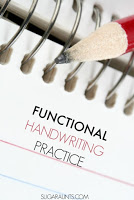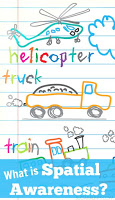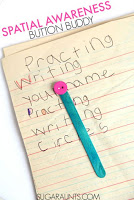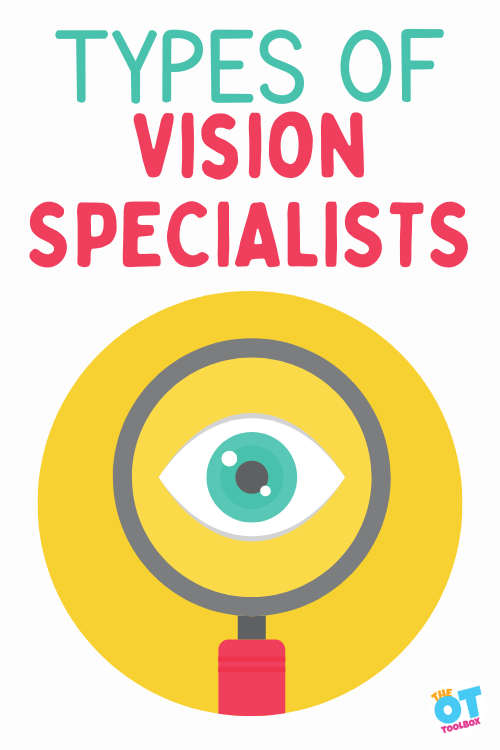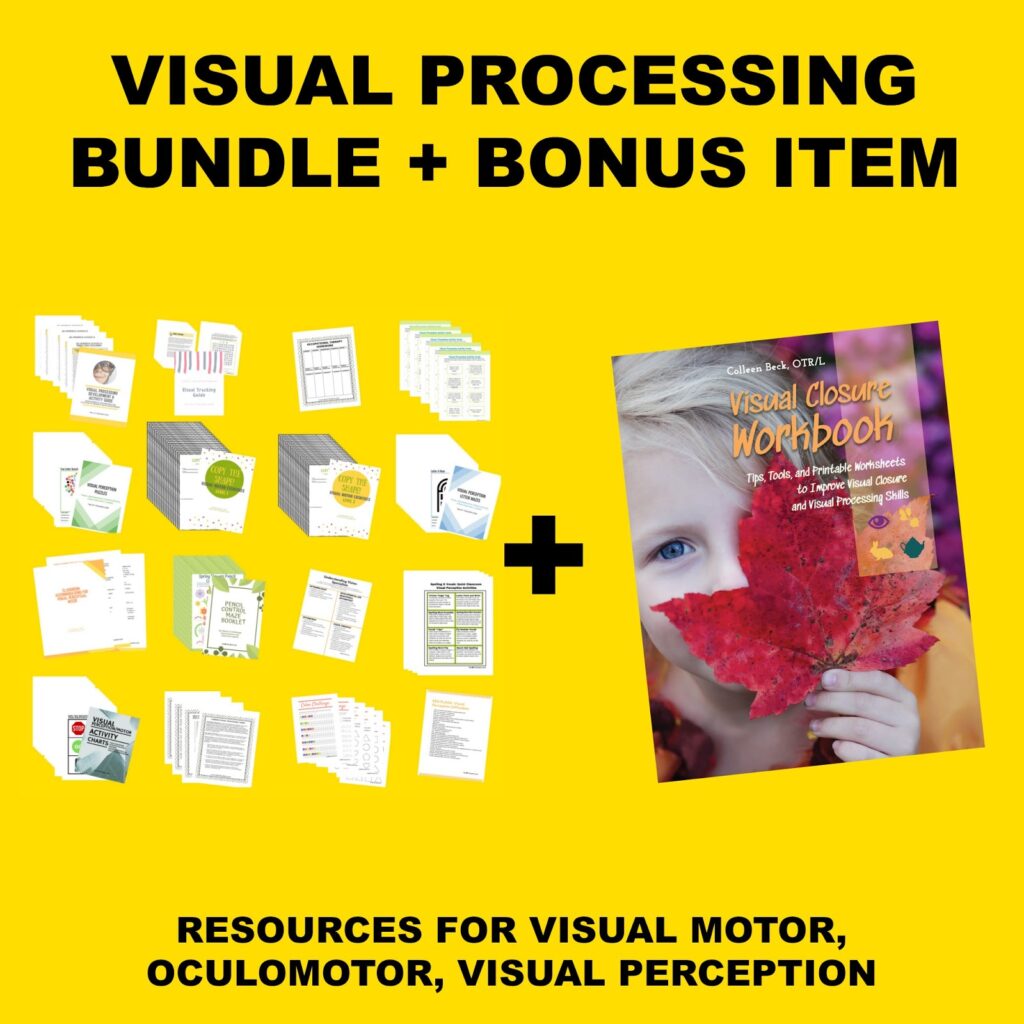In this blog post, we’re covering the components of handwriting in a list with tools and resources to cover each element. Click on each link to find all of the information you are looking for. Be sure to check them all out for a complete understanding of developmental and physiological components to handwriting, creative activities to improve your child’s writing skills, and everything you need to know!
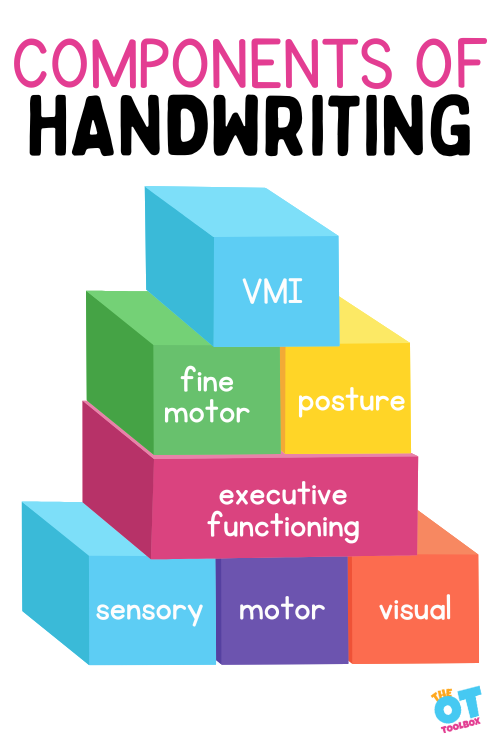
Components of Handwriting
The components of handwriting can be broken down into categories: motor, visual perceptual, executive functioning, and sensory. Each of the building blocks of writing can contribute to handwriting problems when there is a delay in development or issues with building the underlying skills upon the other skill components.
Motor Skills Components- Motor components of handwriting refer to the physical act of writing, which includes the movements made by the hand, arm, and fingers to form letters and words.
This involves range of motion, hand strength, hand-eye coordination, pencil control, and fine motor skills.
Some of the motor components of handwriting include:
- Form: The shape and structure of individual letters and words. Read about letter formation.
- Size: The overall size of the letters and the spacing between them. Read about size awareness.
- Slant: The angle at which the letters are written. This is more applicable to the cursive form. Read about slant in cursive writing.
- Pressure: The amount of force used to write each letter. Read about pencil pressure.
- Speed: The rate at which the writer produces the handwriting. Read about writing speed.
- Writing Posture: The ability to assume and maintain upright sitting posture when writing, using core strength and stability. Read about writing posture.
- Rhythm: How smoothly and fluidly the writing flows across the page. Read about writing rhythm.
- Pencil grasp: This is a large area of handwriting. Refer to our resources on functional pencil grasp and development of pencil grasp for more information.
Fine Motor Elements- The fine motor skills can be further sub-categorized into a list:
- Pincer grasp
- Tripod grasp
- Open thumb web space
- Separation of the sides of the hand
- In-hand manipulation
- Finger isolation
- Finger and thumb opposition
- Wrist extension
Visual Perception- Visual Perceptual components involve the visual, motor, and cognitive processes that go into recognizing and interpreting written text.
This includes the visual and spatial aspects of handwriting, such as:
- Legibility: How easy the writing is to read and understand.
- Alignment: How well the letters and words are placed on the page. Read about margin alignment.
- Discrimination of letters: knowing the difference between upper and lower case letters and making the connection between different forms of a letter. read about visual discrimination.
- Spacing: How evenly spaced the letters and words are from one another. Read about spatial awareness.
Legibility- A related handwriting component is legibility. This is the ability to read written work, and the ability for others to read the written material. Many of these areas refer to the combination of visual and motor elements, or visual motor skills. Legibility refers to several aspects of handwriting:
- Writing speed
- Carryover of handwriting skills
- Copying material from a near point or distant point
- Consistency: How similar the handwriting is from letter to letter, word to word, and page to page.
Sensory Components- The sensory aspect of handwriting relates to several areas:
- Pencil pressure
- Body awareness
- Position in space (or proprioception)
- Self-regulation
- Sensory needs
Executive functioning components- Finally, a critical piece of the handwriting puzzle is executive functioning skills. We can break handwriting and executive functioning skills down into sub-areas:
- Working memory
- Impulse control
- Attention
- Organization
- Flexible thinking
- Planning and prioritization
I’m sharing each of the Handwriting posts here so you can easily find each topic. If bad handwriting is an issue, check out the fundamental ingredients to handwriting!
From fine motor skills to gross motor skills, and sensory considerations to posture: This is a complete guide to Handwriting for Kids from pediatric Occupational and Physical Therapists.
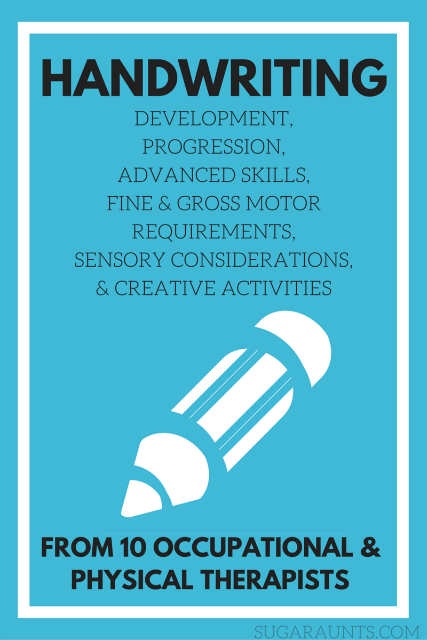
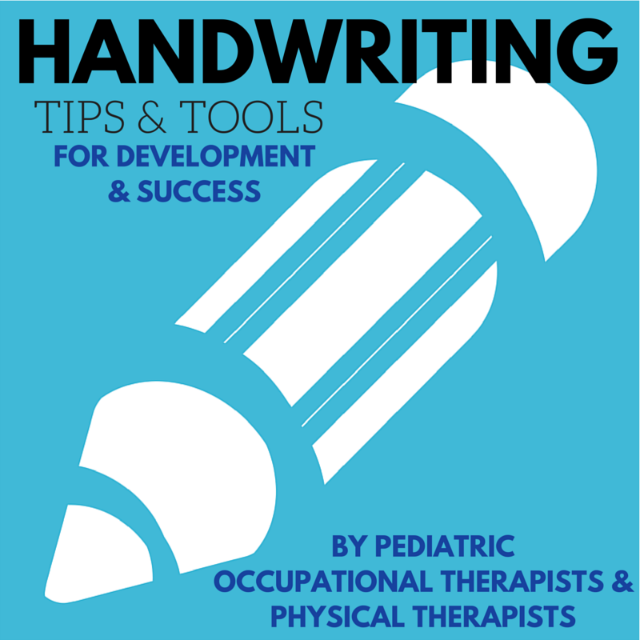
Activities for Handwriting Elements:
You’ll find many resources here on The OT Toolbox to support skill development impacting the elements of handwriting that make a difference in overall legibility. Here are some of our favorites:
- Functional Handwriting Practice Ideas
- What is Visual Spacing
- Visual Tracking Tips and Tools
- Handwriting Spacing Tool and Spatial Awareness Tips and Tools
- Even MORE great pages you where you will find tons of Occupational Therapy treatment ideas and info that can be incorporated into simple play at home, using frugal (mostly free) items that you already have:
- Sensory Play Ideas
- Visual Perceptual Skills
- Fine Motor Skills
For a comprehensive resource that breaks down each component of writing, grab a copy of The Handwriting Book:

The Handwriting Book covers everything you need to know about handwriting, guided by development and focused on function. This digital resource is is the ultimate resource for tips, strategies, suggestions, and information to support handwriting development in kids.
The Handwriting Book breaks down the functional skill of handwriting into developmental areas. These include developmental progression of pre-writing strokes, fine motor skills, gross motor development, sensory considerations, and visual perceptual skills. Each section includes strategies and tips to improve these underlying areas.
- Strategies to address letter and number formation and reversals
- Ideas for combining handwriting and play
- Activities to practice handwriting skills at home
- Tips and strategies for the reluctant writer
- Tips to improve pencil grip
- Tips for sizing, spacing, and alignment with overall improved legibility


